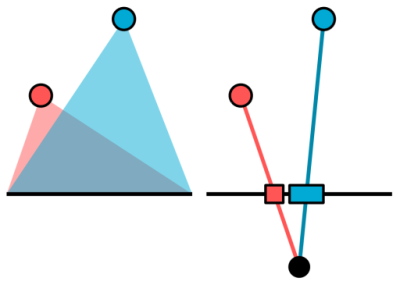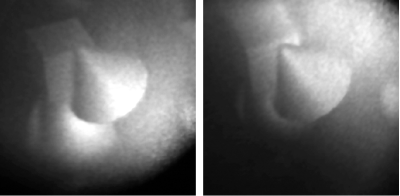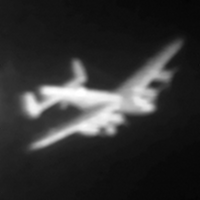ACCELERATING DIGITAL HOLOGRAM GENERATION
Extended abstract of dissertation thesis
Author: Ivo Hanák,
hanak@byte.cz
Supervisor: Prof. Ing. Václav Skala, CSc.,
skala@kiv.zcu.cz
We see the world around us through a reflected light. A hologram
is able to record that light and replay it. The result of a replay is
indistinguishable from reality since a hologram records everything
unlike photography which selects using a lens and a pinhole. This is
shown on an example of computer graphics on Figure 1. When using a
hologram, a view is selected by a viewer when a hologram is replayed.
When using a photo, this is already done when the photo is captured.
As a consequence, when viewing a hologram a viewer can see depth and
s/he can focus anywhere similar to the real world. Thanks to a
numerical description, we can employ holograms for presentation of a
virtual scene.
|

|
|
Fig. 1: A simplified scene containing two light sources (shown
as a red and a blue dot). (Left) When capturing a hologram, each
source influences every part of the recoding plane. (Right)
However, when an approach of a computer graphics is used, a
viewer (a black dot) is considered and every source influences
only a small location.
|
Computation of a hologram is much more complex process than a
computing a projection of a virtual scene in computer graphics.
Therefore, we are aiming acceleration of the process in this work. We
are considering large holograms and by larger we mean a higher number
of samples. In this case, a hologram consisted usually of 4096×4096
samples. Inspired by computer graphics, we accelerated the
computation by reducing a detail. A proposed method converts a scene
to coarser representation employing an unified element. A hologram of
each element is generated using a method based on propagation in an
angular spectrum. At the same time, visibility of an element is
approximated using a modified ray-casting. Thus, the proposed method
combines two different approaches which are usually used separately
when a hologram is computed. We show that it is possible to combine
them and that the result opens opportunities for further
acceleration. An example of a replayed hologram which was calculated
using the proposed method is shown in Fig. 2. In a general case, the
resulting method is not the fastest but we show that a range in which
our method is better includes scene which are being visualized by a
computer graphics today.
|

|
|
Figure 2: Photos of a replayed hologram containing geometrical
shapes (e.g. a cone, a cube, etc.). Photos were captured by a
regular capture from a slightly different locations. Notice a tip
of a cone intersects an edge of a cube (left) while from a
slightly different location they are not even touching themselves
(right). Similar effect cannot be achieved by a regular
photography. The photos correspond to a size of 3×3
cm. The photos were captured by L. Vasa, PhD.
|
Besides a proposal of a new method including its acceleration, we
accelerated an already existing method which is based on ray-casting.
Since the method does not employ coarser representation of a scene,
it cannot control a level of recorded detail. We propose a
modification which allows use of a graphical processing unit (GPU)
and programmable hardware to decrease the computation times
significantly. An example of a photo of a replayed hologram is shown
in Fig. 3.
|

|
|
Figure 3: A photo of a replayed hologram of a scene containing
a model of a airplane. The hologram was computed using a method
based on ray-cating modified for a GPU. The presented photo
corresponds to a size of 3×3
cm. The photo was captured by L. Vasa, PhD.
|


